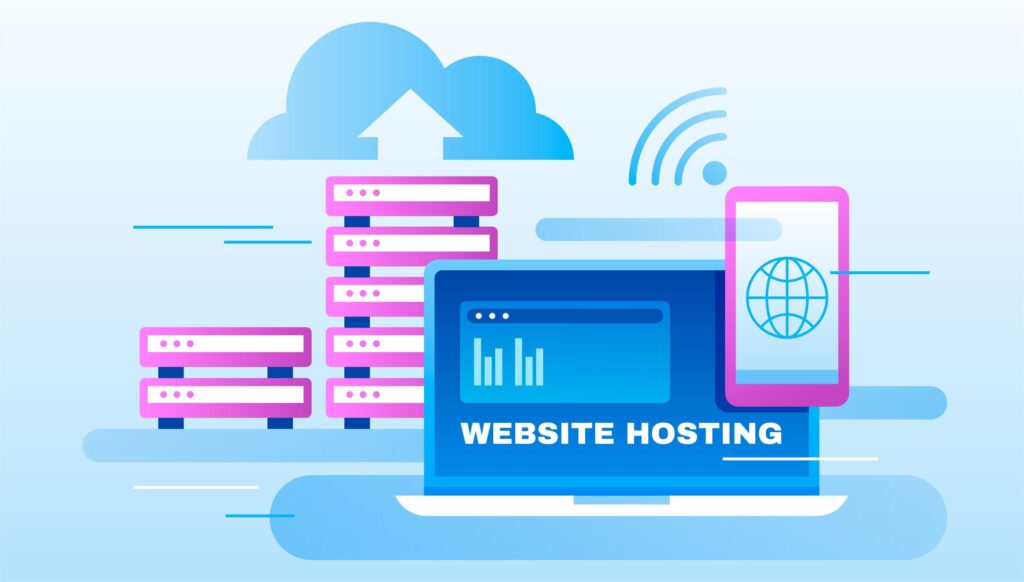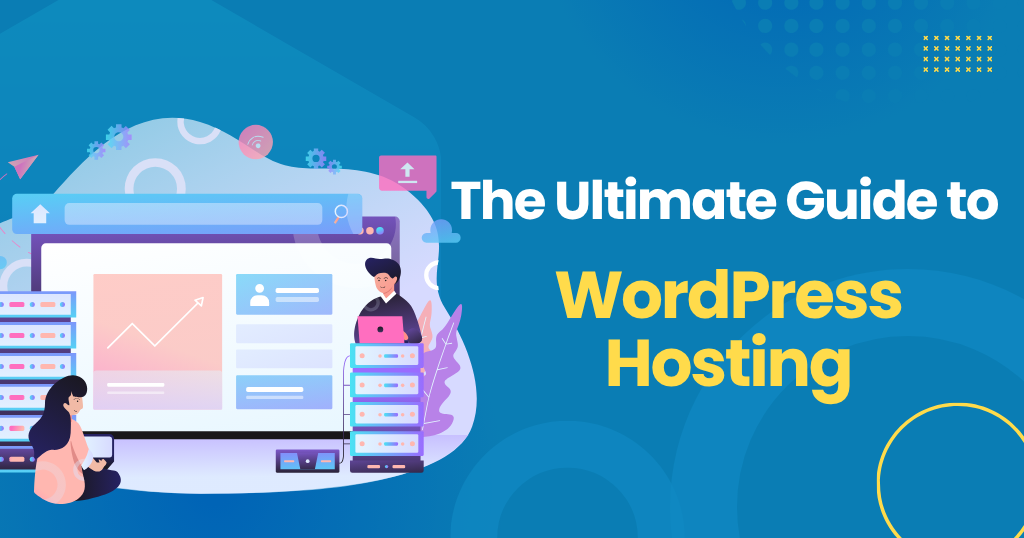Table of Contents
There’s one decision that can make or break your experience when launching your first website: choosing the right hosting. It’s a step most beginners rush through only to regret later.
If you’re new to WordPress, the world of hosting can feel like a maze.
Shared vs. managed, bandwidth, uptime, SSL… It’s a lot. This guide to WordPress hosting for beginners exists to clear the fog and help you make smart choices from day one.
What Is WordPress Hosting?

WordPress hosting is a type of web hosting service specifically optimized for websites built with the WordPress content management system (CMS).
Unlike general web hosting, WordPress hosting comes pre-configured with tools and settings that match WordPress’s technical needs.
It typically includes features like one-click installation, automatic updates, enhanced security, and performance enhancements, making it easier and more efficient to run WordPress sites.
But what is the difference between general web hosting and WordPress hosting?
General Web Hosting
Think of general web hosting as renting a blank room. You can do anything with it you can set up a WordPress site, a Shopify store, or even a custom-coded website. But you’ll have to set things up yourself. It’s flexible but not tailor-made for anything specific.
WordPress Hosting
WordPress hosting is like renting a room that’s already set up for WordPress. Everything is optimized to make WordPress run faster and smoother, like pre-installed WordPress, built-in security, automatic updates, and special support just for WordPress issues. It saves you time and hassle.
In short:
- General hosting = flexible, but you do more of the setup.
- WordPress hosting = made for WordPress, easier to manage, especially for beginners.
So, what makes WordPress one of the most popular site-building platforms in the market?
- This open-source platform allows creators and developers to build simple and complex websites. According to W3Techs, 43.5% of all websites use WordPress.
- More than 59,000 free plugins are available in the official WordPress plugin directory, enabling users to customize and extend their sites without needing to code.
- Over 4.6 million online stores rely on WooCommerce, making it one of the most popular e-commerce solutions built on WordPress.
- Roughly 95% of WordPress security risks are linked to outdated plugins, underscoring the need for consistent updates and maintenance.
Now that you know what WordPress hosting is and why it matters, the next step is figuring out which type is right for you. Understanding the key differences between WordPress hosting types helps you avoid unnecessary hassle and make the best choice from the start.
Types of WordPress Hosting Plans

Not all WordPress hosting is created equal. It’s like choosing your living situation, do you want a shared apartment, a private suite, or your own mansion? Each setup changes how much freedom, speed, and support you get. Let’s take a closer look at what each option really means for your site.
1- Shared WordPress Hosting
Shared WordPress hosting lets your website run on a server that also hosts other websites. Think of it like living in an apartment building, you have your own space, but you share the building’s main resources like water and electricity.
It is the same for shared WordPress hosting. Your website shares the same server space and resources, processing power, memory, and storage as several other websites.
Pros:
- Low-cost
- Beginner-friendly setup
- WordPress often pre-installed
Cons:
- Slower speeds during traffic spikes
- Limited control
- Shared security risks
2- VPS WordPress Hosting
VPS (Virtual Private Server) WordPress hosting means your website gets its own dedicated slice of a server, but you’re still sharing the physical machine with others, your part runs separately, It’s similar to having your private workspace inside a larger complex, you’re still in the same building, but your area is separate and secure.
Pros:
- More stable and secure
- Dedicated resources = better performance
- Greater flexibility in customization
Cons:
- Higher cost
- Requires some technical know-how
3- Managed WordPress Hosting
Managed WordPress hosting means your hosting provider handles the behind-the-scenes work, like keeping WordPress updated, protecting your site, backing it up, and making sure it runs fast.
It’s a stress-free option for anyone who wants to run a WordPress site without dealing with the technical side.
Pros:
- Automatic WordPress updates
- Expert-level WordPress support
- Enhanced speed and security
- Built-in backups and caching
Cons:
- More expensive
- Limited flexibility (can’t install all plugins)
4- Cloud WordPress Hosting
Cloud WordPress hosting runs your website across multiple connected servers instead of just one. So if one server has a problem, another one keeps your site running smoothly.
This setup gives your site more speed, better uptime, and the ability to handle traffic spikes without crashing.
Pros:
- Scalable resources on demand
- Excellent uptime and performance
- Built-in backups for stability
Cons:
- Setup can be tricky for non-technical users
- Costs aren’t always consistent.
5- Dedicated WordPress Hosting
Dedicated hosting means your website gets an entire server all to itself, no sharing with anyone else. It’s like owning your own building instead of renting a room. This setup gives you full control, maximum speed, and strong security.
Pros:
- Full control and root access
- Maximum performance
- Highest level of security and customization
Cons:
- Expensive
- Requires server management skills
- Overkill for small or medium websites
How to Set Up WordPress Hosting

Before your site can shine, you’ve got to build it on solid ground. That means making a few smart moves upfront, like picking the right host, locking in the perfect domain, and securing your setup.
1. Choose the Right Hosting Provider
Start by picking a trusted web hosting company that supports WordPress. Look for these key features:
- WordPress-specific plans (shared, managed, VPS, cloud, etc.)
- Good customer support
- High uptime guarantee (99.9% or higher)
- Free SSL certificate
- Easy WordPress installation (1-click or automatic)
OR you can choose the hassle-free solution with Thamara WordPress hosting plan.
2. Register your domain name
Your domain is your website’s address (such as www.yoursite.com).
Choose a name that’s easy to remember, reflects your brand, and ends with a common extension like .com or .net.
That’s what we bring to the table: the perfect domain that your brand deserves. You don’t need to worry about your domain name.
3. Select a Hosting Plan That Fits Your Needs
- Shared hosting: great for beginners and small sites
- VPS or cloud hosting: ideal for growing websites
- Managed WordPress hosting: hands-off and optimized for WordPress
- Dedicated hosting: best for high-traffic or complex sites
Pick a plan based on your budget, expected traffic, and how much control you want.
4. Install WordPress
Thamara offers one-click WordPress installation. It takes just a few minutes to get your site up and running.
5. Log In to WordPress
Use your admin username and password to access your site’s backend. From here, you can:
- Change your theme (design)
- Install plugins for added features
- Create pages and blog posts
- Customize your site’s layout, menus, and settings
6. Secure Your Site
- Even if you’re just starting out, security matters. Make sure to:
- Activate your SSL certificate (usually free with most hosts)
- Install a security plugin like Wordfence or Sucuri
- Set up automatic backups using your host’s tools or plugins like UpdraftPlus
- Use strong admin passwords
Final Tips You Need to Keep in Mind
- Start Simple, Then Scale
Don’t overcomplicate your setup. Begin with the basics, and as your site grows, you can upgrade your hosting, add plugins, or redesign. - Choose a Reliable Host
Pick a hosting provider that’s known for uptime, fast support, and WordPress expertise, even if it costs a little more. It’ll save you headaches later. - Keep Your Site Updated
Always update WordPress, your theme, and plugins. Outdated software is the #1 reason sites get hacked. - Use Only What You Need
Avoid installing every plugin or flashy feature you find. Stick to what your site actually needs this keeps it fast and clean. - Back Up Regularly
Always have a backup. Whether it’s automatic from your host or through a plugin, backups are your safety net if something goes wrong.
Or you can easily start with Thamara WordPress and forget about the hassle.
We’ve taken care of the hard parts: fast hosting, one-click WordPress setup, strong security, and expert support that helps. Whether you’re launching a blog, a business site, or an online store, Thamara gives you the tools to build with confidence from day one. Simple, powerful, and built for WordPress just the way it should be.



